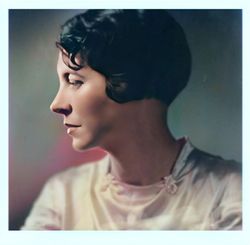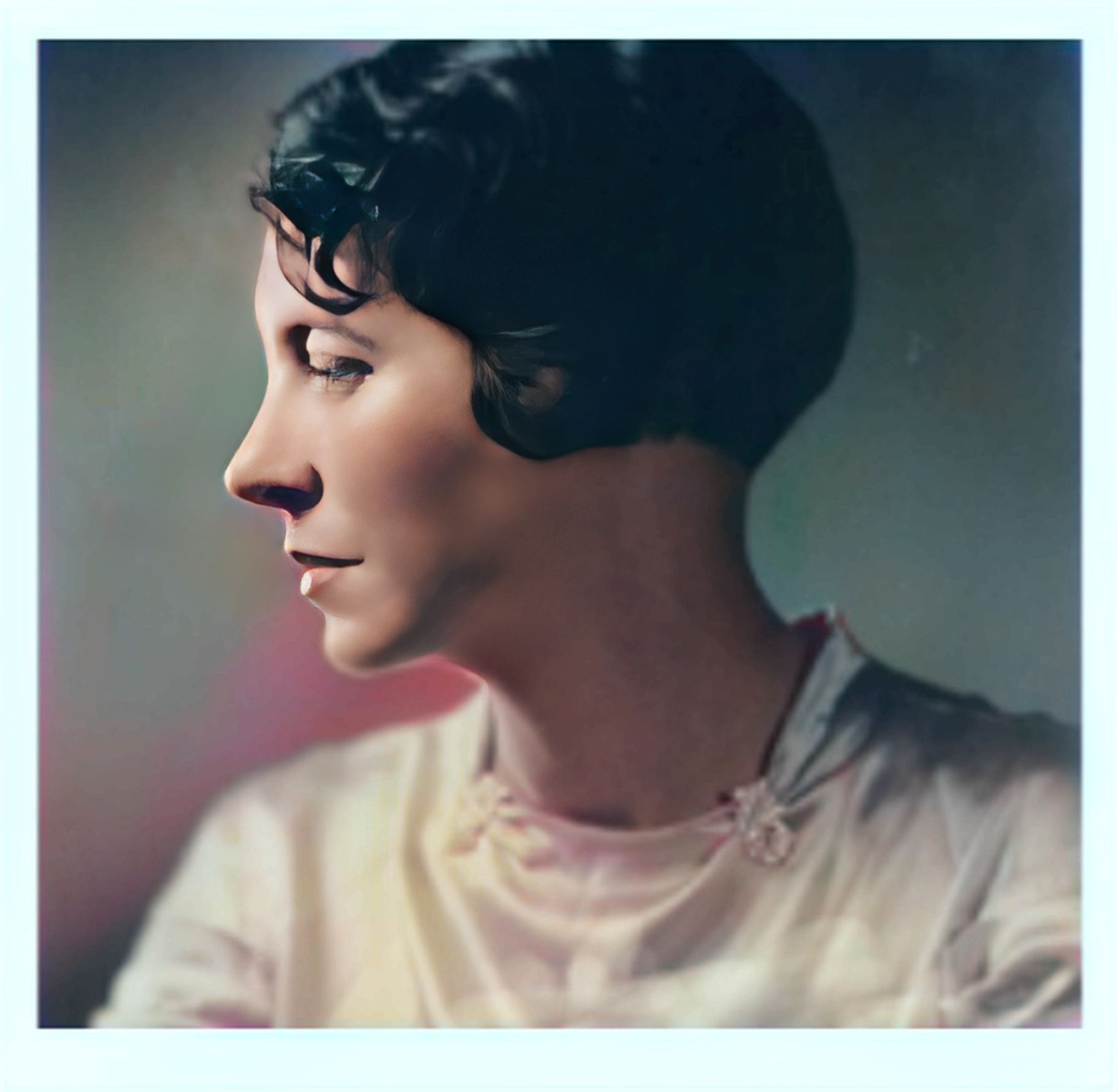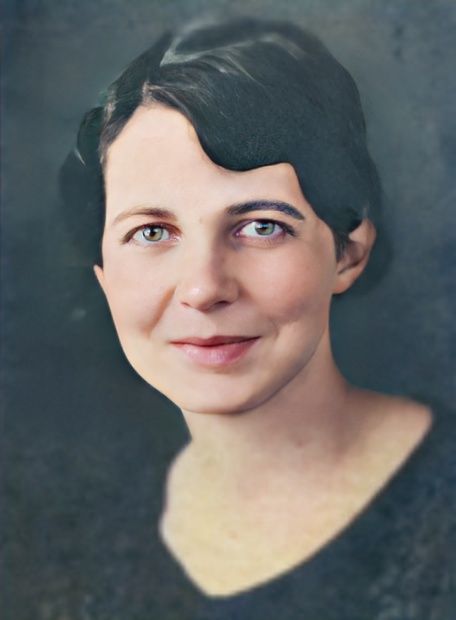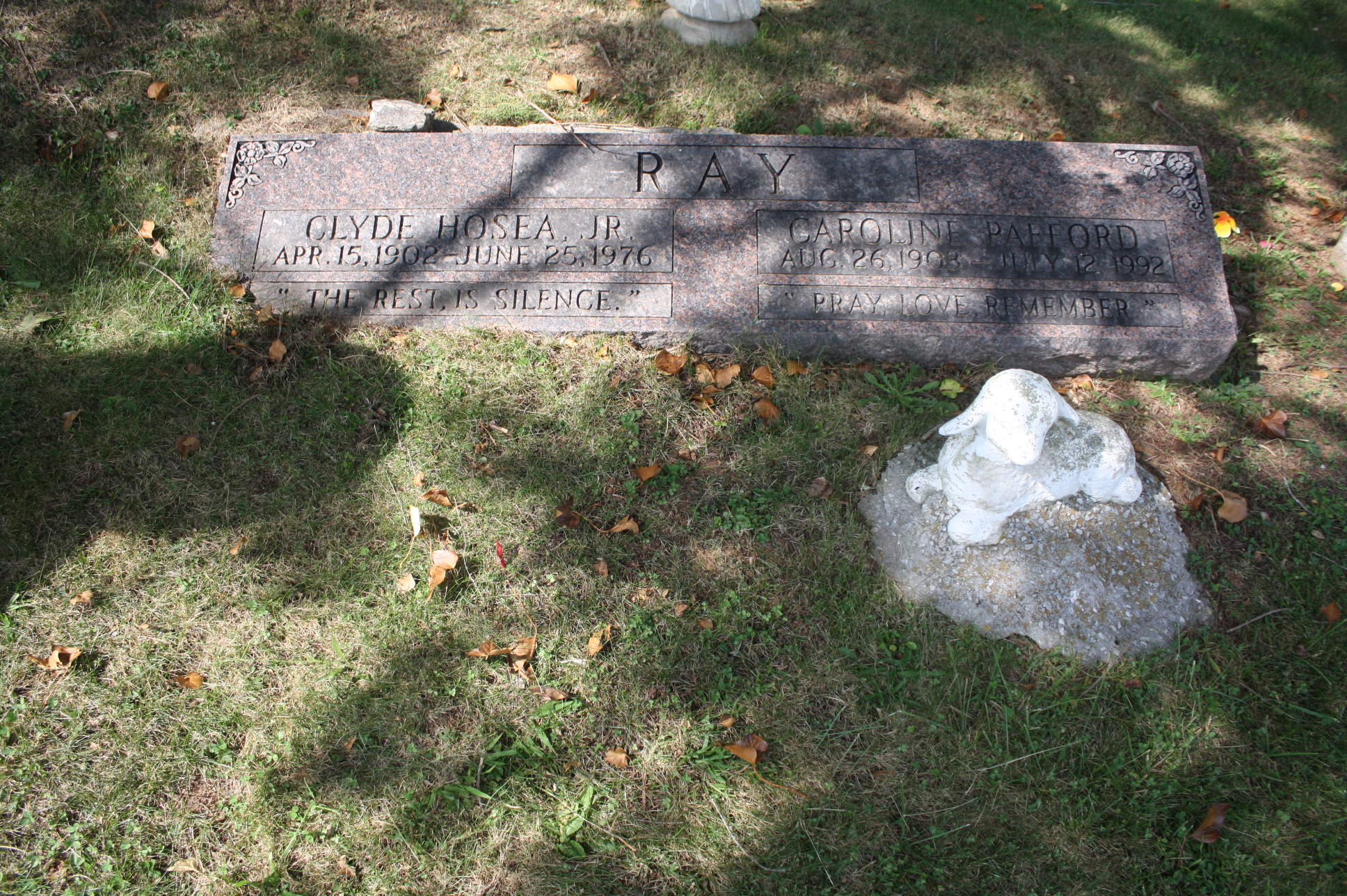-----------------
Caroline Miller (1903-1992)
Caroline Miller published her first novel, Lamb in His Bosom, receiving the Pulitzer Prize for Fiction in 1933
Courtesy of Hargrett Rare Book and Manuscript Library, University of Georgia Libraries
Caroline Miller
and became the first Georgian to win the Pulitzer Prize for fiction. The thirty-year-old housewife and author produced one of the most critically acclaimed first novels of the Southern Renaissance period. In addition to the Pulitzer, the novel earned France's Prix Femina in 1934 and became an immediate best-seller.
Miller, the youngest of seven children, was born on August 26, 1903, in Waycross (in Ware County) to Levy Zan Hall and Elias Pafford, a schoolteacher and Methodist minister. Miller's father died while she was in junior high school; her mother died in her junior year of high school. She demonstrated an early interest in writing and acting and performed in several high school plays. Shortly after graduation she married her high school English teacher, William D. Miller, and the couple moved to Baxley. In 1927, after six years of marriage, a son, William Dews Jr., was born. Miller gave birth again in 1929 to twin boys, George and Harvey. In addition to her domestic duties, Miller continued to write short stories to supplement the family income.
Described by literary critics as a work of regional historical realism, Lamb in His Bosom depicts the struggle and hardships of poor white pioneers in the nineteenth century on the south Georgia frontier, known as the wiregrass region. The story begins with the marriage of sixteen-year-old Tillitha Cean Carver to Lonzo Smith, a neighboring yeoman farmer several years her senior. By the time Cean is forty-three, she has borne fourteen children, buried five of them and a husband, and survived civil war, a venomous snakebite, a ferocious panther attack, and a deadly house fire. She perseveres to find contentment in a second marriage to a New Light preacher named Dermid O'Connor. Miller centers the story of the Carver and Smith families around the experiences of Cean and her sister-in-law Margot Kimbrough, an independent-minded girl from the coast. Childbirth, the central theme of the novel, represents both religious rebirth and feminine fulfillment.
With characters named after Miller's own family members, Lamb in His Bosom grew out of her interest in local research and genealogy. While traveling around the south Georgia countryside, she collected in a notebook the folktales and idiomatic expressions that became the basis for her simple and direct style of writing. The author, who had no formal training, received high praise from literary critics for her faithful representation of wiregrass dialect and culture.
The stress of sudden fame and attention strained the Millers' marriage, and in 1936 the couple divorced. In 1937 Caroline Miller married a florist and antique dealer, Clyde H. Ray Jr. The couple made their home in Waynesville, North Carolina, where Caroline helped her husband in his business and gave birth to a fourth son, Clyde H. III, and a daughter, Caroline Patience.
After moving to North Carolina, Miller continued to write features and short stories for newspapers and magazines. Her second novel, Lebanon (1944), received a lukewarm reception from critics, and Miller herself was not satisfied with it. Trying to recreate the success of her first book, Miller once again placed her heroine, Lebanon Fairgale, in the backwoods of Georgia. For this novel, however, Miller formulated an awkward romantic plot, garnering criticism that Lebanon lacked the realistic credibility of Lamb in His Bosom.
During the following decades Miller wrote prolifically and completed several manuscripts. Uncomfortable in the glare of the public spotlight so many years earlier, Miller chose not to publish any additional work. She remained in her mountain home in western North Carolina, cherishing her privacy and solitude. Lamb in His Bosom enjoyed a resurgence of popularity a year after Miller's death, when Peachtree Publishers in Atlanta reprinted the novel with an afterword by historian Elizabeth Fox-Genovese. This signaled a new attention to her work by both literary scholars and historians. Caroline Miller died on July 12, 1992, knowing that she had received what she once declared to be the true reward of a novelist—"the knowledge that after he dies he will leave the best part of himself behind."
Miller was inducted into the Georgia Writers Hall of Fame in 2007 and into Georgia Women of Achievement in 2009. submitted by tripetta
-----------------
Caroline Miller (1903-1992)
Caroline Miller published her first novel, Lamb in His Bosom, receiving the Pulitzer Prize for Fiction in 1933
Courtesy of Hargrett Rare Book and Manuscript Library, University of Georgia Libraries
Caroline Miller
and became the first Georgian to win the Pulitzer Prize for fiction. The thirty-year-old housewife and author produced one of the most critically acclaimed first novels of the Southern Renaissance period. In addition to the Pulitzer, the novel earned France's Prix Femina in 1934 and became an immediate best-seller.
Miller, the youngest of seven children, was born on August 26, 1903, in Waycross (in Ware County) to Levy Zan Hall and Elias Pafford, a schoolteacher and Methodist minister. Miller's father died while she was in junior high school; her mother died in her junior year of high school. She demonstrated an early interest in writing and acting and performed in several high school plays. Shortly after graduation she married her high school English teacher, William D. Miller, and the couple moved to Baxley. In 1927, after six years of marriage, a son, William Dews Jr., was born. Miller gave birth again in 1929 to twin boys, George and Harvey. In addition to her domestic duties, Miller continued to write short stories to supplement the family income.
Described by literary critics as a work of regional historical realism, Lamb in His Bosom depicts the struggle and hardships of poor white pioneers in the nineteenth century on the south Georgia frontier, known as the wiregrass region. The story begins with the marriage of sixteen-year-old Tillitha Cean Carver to Lonzo Smith, a neighboring yeoman farmer several years her senior. By the time Cean is forty-three, she has borne fourteen children, buried five of them and a husband, and survived civil war, a venomous snakebite, a ferocious panther attack, and a deadly house fire. She perseveres to find contentment in a second marriage to a New Light preacher named Dermid O'Connor. Miller centers the story of the Carver and Smith families around the experiences of Cean and her sister-in-law Margot Kimbrough, an independent-minded girl from the coast. Childbirth, the central theme of the novel, represents both religious rebirth and feminine fulfillment.
With characters named after Miller's own family members, Lamb in His Bosom grew out of her interest in local research and genealogy. While traveling around the south Georgia countryside, she collected in a notebook the folktales and idiomatic expressions that became the basis for her simple and direct style of writing. The author, who had no formal training, received high praise from literary critics for her faithful representation of wiregrass dialect and culture.
The stress of sudden fame and attention strained the Millers' marriage, and in 1936 the couple divorced. In 1937 Caroline Miller married a florist and antique dealer, Clyde H. Ray Jr. The couple made their home in Waynesville, North Carolina, where Caroline helped her husband in his business and gave birth to a fourth son, Clyde H. III, and a daughter, Caroline Patience.
After moving to North Carolina, Miller continued to write features and short stories for newspapers and magazines. Her second novel, Lebanon (1944), received a lukewarm reception from critics, and Miller herself was not satisfied with it. Trying to recreate the success of her first book, Miller once again placed her heroine, Lebanon Fairgale, in the backwoods of Georgia. For this novel, however, Miller formulated an awkward romantic plot, garnering criticism that Lebanon lacked the realistic credibility of Lamb in His Bosom.
During the following decades Miller wrote prolifically and completed several manuscripts. Uncomfortable in the glare of the public spotlight so many years earlier, Miller chose not to publish any additional work. She remained in her mountain home in western North Carolina, cherishing her privacy and solitude. Lamb in His Bosom enjoyed a resurgence of popularity a year after Miller's death, when Peachtree Publishers in Atlanta reprinted the novel with an afterword by historian Elizabeth Fox-Genovese. This signaled a new attention to her work by both literary scholars and historians. Caroline Miller died on July 12, 1992, knowing that she had received what she once declared to be the true reward of a novelist—"the knowledge that after he dies he will leave the best part of himself behind."
Miller was inducted into the Georgia Writers Hall of Fame in 2007 and into Georgia Women of Achievement in 2009. submitted by tripetta
Family Members
-
![]()
Naomi Elizabeth Pafford
1883–1884
-
![]()
Henry Morrison Pafford Sr
1885–1964
-
![]()
Rev Bascom Anthony Pafford
1886–1947
-
![]()
Harvey Etheridge Pafford
1888–1969
-
![]()
Ollie Mae Pafford Braddy
1892–1980
-
![]()
John Williams Pafford
1895–1988
-
![]()
Levy Magdalene "Maggie" Pafford Lott
1897–1971
-
![]()
Infant twin Pafford
1901–1901
-
![]()
Infant twin Pafford
1901–1901
-
![]()
Elias Moore Pafford Jr
1906–1908
Sponsored by Ancestry
Advertisement
Explore more
Sponsored by Ancestry
Advertisement

























